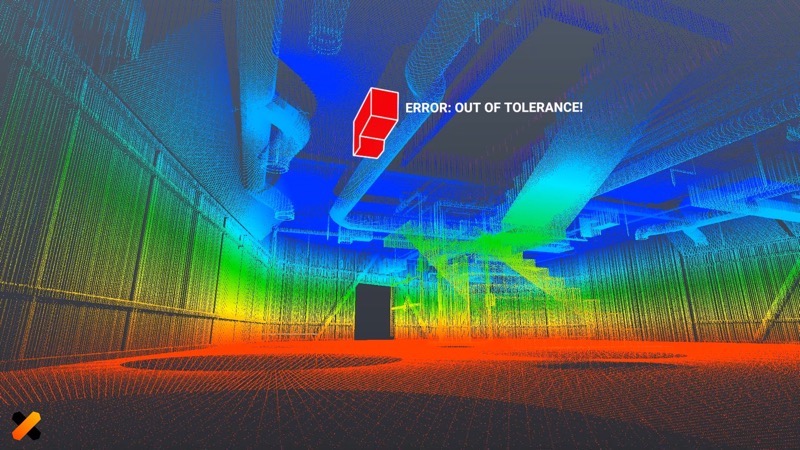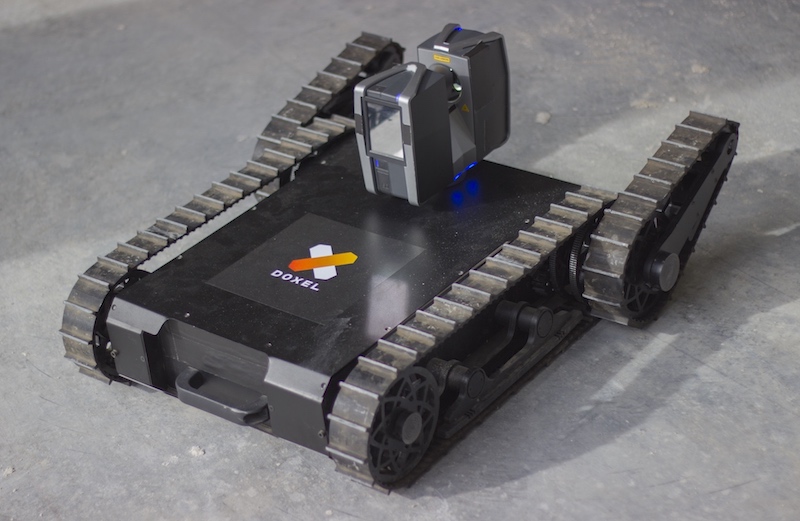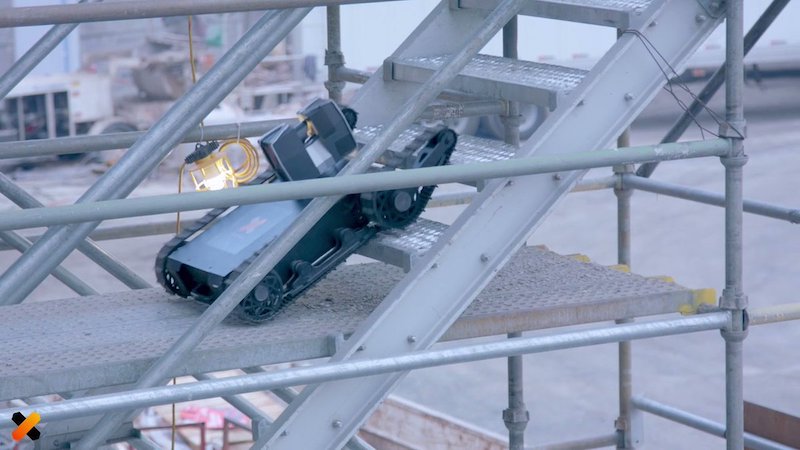The larger a construction project is, the more complicated it is going to be to manage. Small oversights or errors can lead to exponentially greater losses in time and money.
Doxel, a new construction productivity solution, claims to simplify the construction management process to help avoid these costly loses. Doxel’s preferred solution? Robots equipped with new artificial intelligence-based computer vision software.
In addition to drones capturing the site from above, Doxel uses rovers to comb through the site and gain the most accurate, up-to-date information. Part WALL-E, part MSE-6 mouse droid from “Star Wars,” Doxel’s self-directing robots survey building sites each day to capture HD imagery and laser scans at all stages of construction. The robots can traverse uneven terrain, multiple terrain types such as rock, concrete, or dirt, and can even climb stairs. Once in the correct position, the robot will stop and take a 360-degree scan of a space before moving on to the next area.
 Courtesy Doxel.
Courtesy Doxel.
Working behind the software is a 3D semantic understanding algorithm developed by Doxel. This algorithm classifies objects in real-world construction environments with a high level of reliability. 3D computer vision was used because a 3D neural network, theoretically, requires fewer datasets for training than 2D. This new computer vision algorithm avoids the issues commonly associated with scans such as occlusion and poor visibility. It also is able to interpret clutter from installed materials.
Doxel’s algorithms classify installed components and measure quantities in real-time. This data is then cross-referenced with the project estimate to provide instant feedback of where a project stands financially. The software calculates earned value for thousands of line items to provide an exact amount owed for a day’s work.
 Courtesy Doxel.
Courtesy Doxel.
Doxel also tracks model-to-field deviations instantly to catch and correct errors early, before they cost time and money to rectify. The AI software deep links to the project schedule and detects when a crew falls behind. Alerts are sent via an integrated app notifying everyone of the delay so managers can re-prioritize and optimize labor
productivity.
Integrated cloud software makes it easy to track progress over time for things like plumbing, electrical, and mechanical. In one case study, Doxel increased productivity by 38% and helped the project team deliver the project 11% under budget.
Related Stories
| Feb 10, 2011
Zero Energy Buildings: When Do They Pay Off in a Hot and Humid Climate?
There’s lots of talk about zero energy as the next big milestone in green building. Realistically, how close are we to this ambitious goal? At this point, the strategies required to get to zero energy are relatively expensive. Only a few buildings, most of them 6,000 sf or less, mostly located in California and similar moderate climates, have hit the mark. What about larger buildings, commercial buildings, more problematic climates? Given the constraints of current technology and the comfort demands of building users, is zero energy a worthwhile investment for buildings in, for example, a warm, humid climate?
| Jan 28, 2011
Firestone Building Products Unveils FirestoneRoof Mobile Web App
Firestone Building Products Company unveiled FirestoneRoof, a first-of-its-kind free mobile web app. The FirestoneRoof mobile web app enables customers to instantly connect with Firestone commercial roofing experts and is designed to make it easier for building owners, facility managers, roofing consultants and others charged with maintaining commercial roofing systems to get the support they need, when they need it.
| Jan 25, 2011
Bloomberg launches NYC Urban Tech Innovation Center
To promote the development and commercialization of green building technologies in New York City, Mayor Michael R. Bloomberg has launched the NYC Urban Technology Innovation Center. This initiative will connect academic institutions conducting underlying research, companies creating the associated products, and building owners who will use those technologies.
| Jan 19, 2011
Large-Scale Concrete Reconstruction Solid Thinking
Driven by both current economic conditions and sustainable building trends, Building Teams are looking more and more to retrofits and reconstruction as the most viable alternative to new construction. In that context, large-scale concrete restoration projects are playing an important role within this growing specialty.
| Jan 4, 2011
6 green building trends to watch in 2011
According to a report by New York-based JWT Intelligence, there are six key green building trends to watch in 2011, including: 3D printing, biomimicry, and more transparent and accurate green claims.
| Jan 4, 2011
LEED standards under fire in NYC
This year, for the first time, owners of 25,000 commercial properties in New York must report their buildings’ energy use to the city. However, LEED doesn’t measure energy use and costs, something a growing number of engineers, architects, and landlords insist must be done. Their concerns and a general blossoming of environmental awareness have spawned a host of rating systems that could test LEED’s dominance.
| Dec 17, 2010
New engineering building goes for net-zero energy
A new $90 million, 250,000-sf classroom and laboratory facility with a 450-seat auditorium for the College of Electrical and Computer Engineering at the University of Illinois at Urbana/Champaign is aiming for LEED Platinum.
| Dec 6, 2010
Honeywell survey
Rising energy costs and a tough economic climate have forced the nation’s school districts to defer facility maintenance and delay construction projects, but they have also encouraged districts to pursue green initiatives, according to Honeywell’s second annual “School Energy and Environment Survey.”
| Nov 29, 2010
Data Centers: Keeping Energy, Security in Check
Power consumption for data centers doubled from 2000 and 2006, and it is anticipated to double again by 2011, making these mission-critical facilities the nation’s largest commercial user of electric power. Major technology companies, notably Hewlett-Packard, Cisco Systems, and International Business Machines, are investing heavily in new data centers. HP, which acquired technology services provider EDS in 2008, announced in June that it would be closing many of its older data centers and would be building new, more highly optimized centers around the world.













